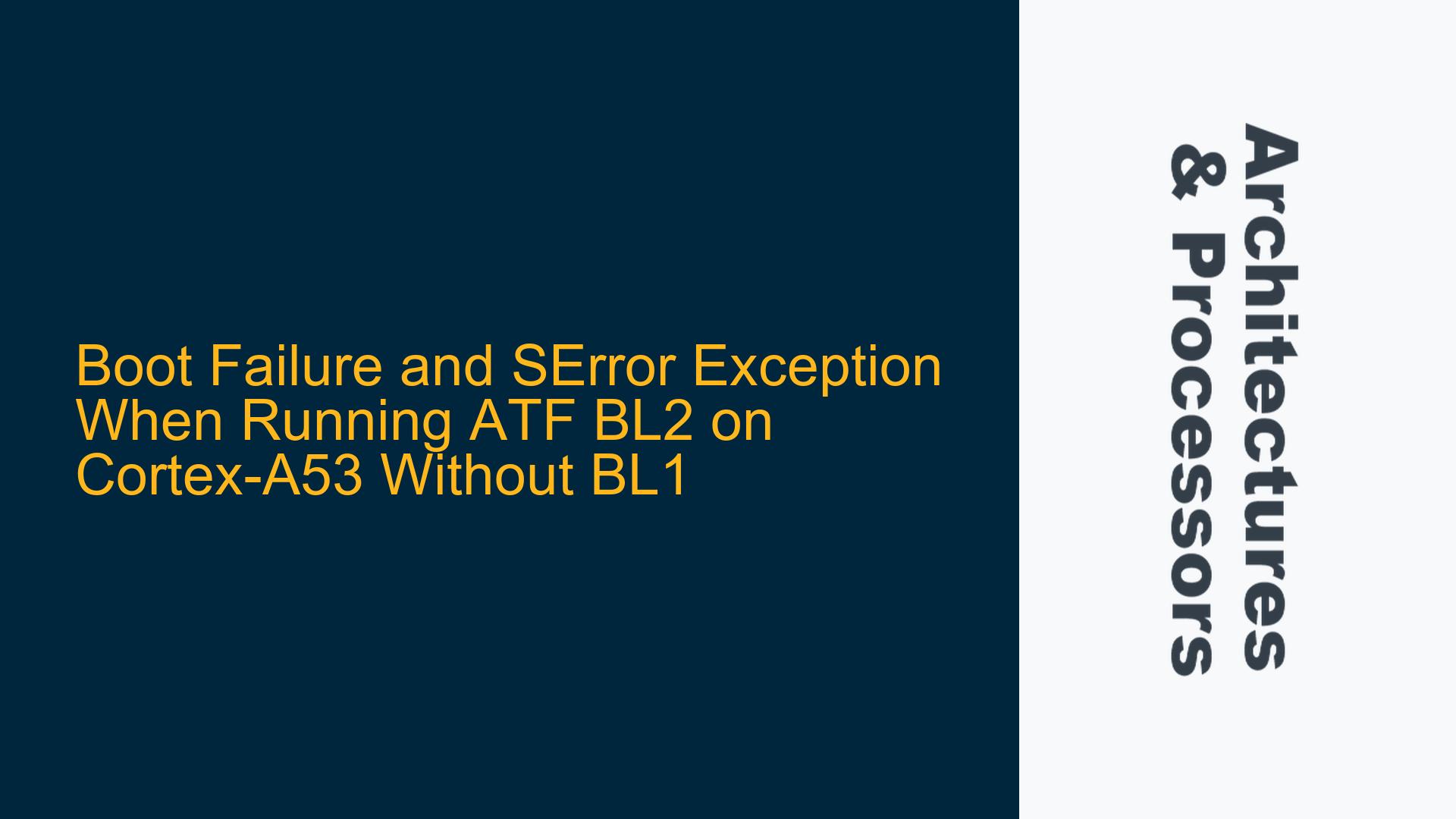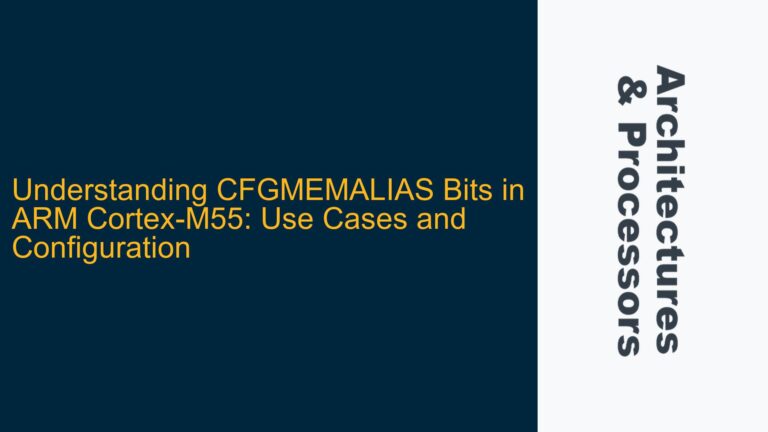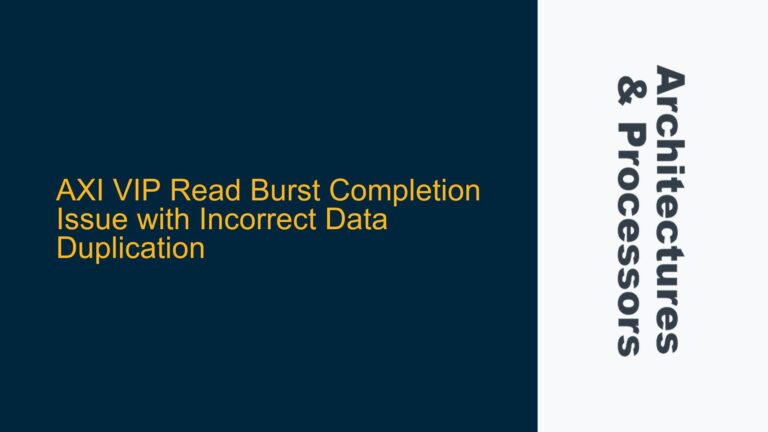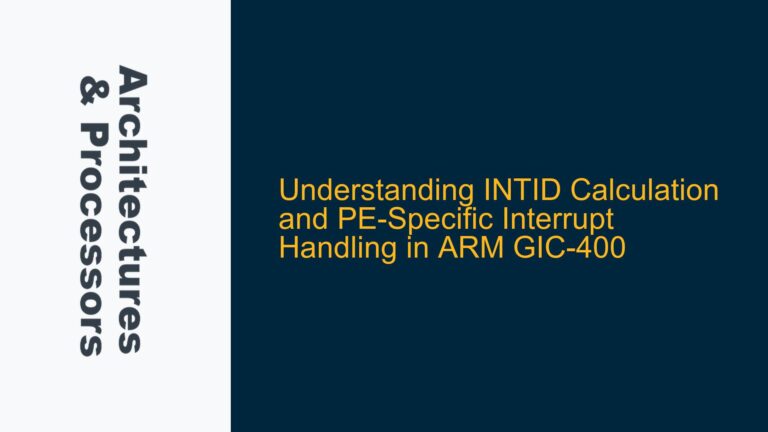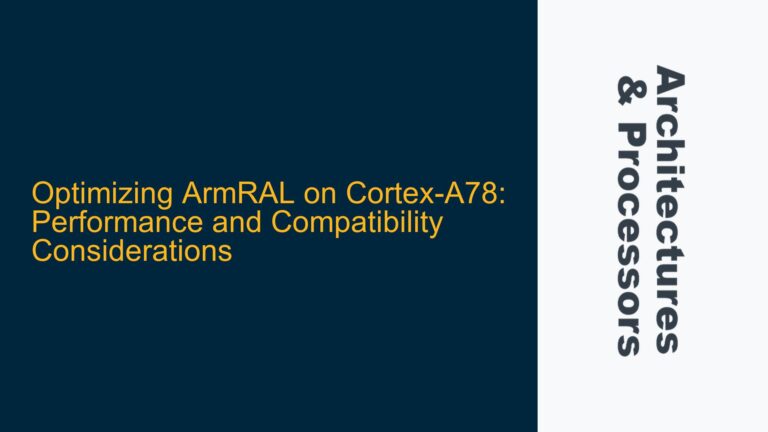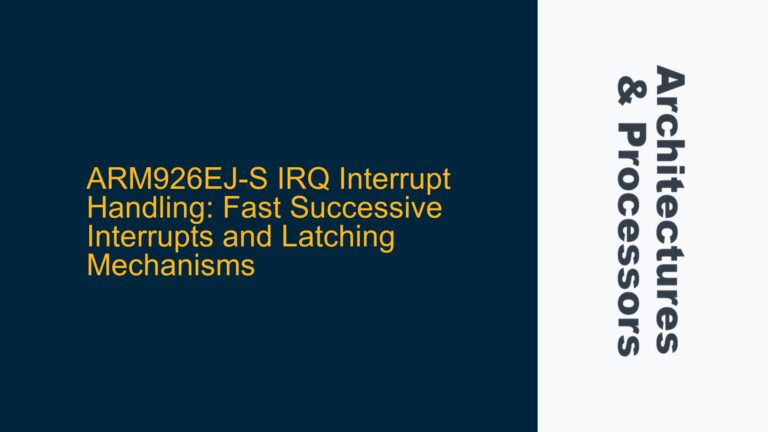ARM Cortex-A53 Boot Process and ATF BL2 Initialization Challenges
The ARM Cortex-A53 processor is a widely used 64-bit core in embedded systems, often integrated into custom System-on-Chips (SoCs) for applications requiring high performance and energy efficiency. The ARM Trusted Firmware (ATF) provides a reference implementation of secure world software, including Boot Loader stages BL1 and BL2. BL1 is typically responsible for initializing the CPU, setting up the minimal runtime environment, and loading BL2 into memory. BL2, in turn, initializes the rest of the system, including DRAM, and loads the next stage bootloader or operating system.
When porting ATF BL2 to a custom SoC based on Cortex-A53, the absence of BL1 or an equivalent BootROM can lead to significant challenges. The primary issue arises when attempting to run BL2 directly from RAM without the proper initialization sequence typically handled by BL1. This can result in an SError exception, which is a system error indicating a severe fault in the system, often related to memory access, CPU state, or improper initialization.
The SError exception in this context is likely tied to the Cortex-A53’s memory management unit (MMU), cache coherency, or exception handling mechanisms. Without BL1, critical steps such as setting up the MMU, configuring the caches, and initializing the exception vectors are skipped, leading to undefined behavior when BL2 attempts to execute.
Memory Configuration Mismatch and CPU Initialization Gaps
The SError exception encountered when running ATF BL2 directly from RAM without BL1 can be attributed to several potential causes. The first and most significant is a mismatch in memory configuration. BL2 expects a specific memory layout and configuration, including the MMU being enabled with the correct translation tables. Without BL1, the MMU may either be disabled or configured incorrectly, leading to invalid memory accesses when BL2 attempts to execute.
Another critical factor is the initialization of the CPU itself. BL1 typically performs essential tasks such as setting up the CPU’s control registers, enabling caches, and configuring the exception vectors. Without these steps, the CPU may be in an inconsistent state when BL2 starts executing. For example, the cache may be disabled or improperly configured, leading to coherency issues when accessing memory. Similarly, the exception vectors may not be set up correctly, causing the CPU to handle exceptions improperly and resulting in an SError.
Additionally, the absence of BL1 means that the runtime environment expected by BL2 is not established. This includes the stack pointer, which is typically set up by BL1 to point to a valid memory region. If the stack pointer is not initialized correctly, any function calls or local variable usage in BL2 can lead to memory corruption or invalid memory accesses, triggering an SError.
Implementing a Minimal BL1 Equivalent and Debugging the SError Exception
To resolve the SError exception and successfully run ATF BL2 on a Cortex-A53 without BL1, a minimal BL1 equivalent must be implemented. This involves performing the critical initialization steps typically handled by BL1, ensuring that the CPU and memory are in a consistent state before jumping to BL2.
The first step is to set up the exception vectors. The Cortex-A53 expects the exception vectors to be located at specific addresses in memory. These vectors must point to valid exception handlers, which can be simple stubs initially. The reset vector, in particular, should point to the entry point of the minimal BL1 equivalent.
Next, the CPU’s control registers must be configured. This includes enabling the MMU with a basic translation table that maps the memory regions used by BL2. The translation table should map the RAM where BL2 is loaded as executable and ensure that the stack pointer is initialized to a valid memory region. The cache should also be enabled and configured to maintain coherency with the memory.
Once the minimal BL1 equivalent is implemented, the SError exception can be debugged by examining the exception syndrome register (ESR). The ESR provides detailed information about the cause of the exception, such as whether it was due to an instruction abort, data abort, or other fault. By decoding the ESR value, the specific cause of the SError can be identified and addressed.
For example, if the ESR indicates an instruction abort, this suggests that the CPU attempted to execute an instruction from an invalid memory address. This could be due to an incorrect MMU configuration or an invalid entry point for BL2. Similarly, a data abort indicates an invalid memory access, which could be caused by an uninitialized stack pointer or incorrect memory mapping.
In addition to examining the ESR, the use of a debugger can provide further insights into the state of the CPU and memory when the SError occurs. By setting breakpoints and inspecting the CPU registers, memory contents, and translation tables, the exact point of failure can be pinpointed.
Finally, once the minimal BL1 equivalent is verified to initialize the CPU and memory correctly, BL2 can be loaded into RAM and executed. The entry point of BL2 should be carefully verified to ensure it matches the address specified in the minimal BL1 equivalent. With the proper initialization sequence in place, the SError exception should no longer occur, allowing BL2 to execute and continue the boot process.
By following these steps, the challenges of running ATF BL2 on a Cortex-A53 without BL1 can be overcome, ensuring a stable and reliable boot process for custom SoCs.
